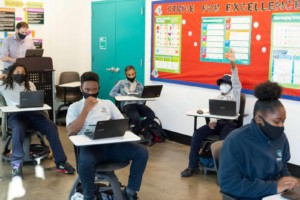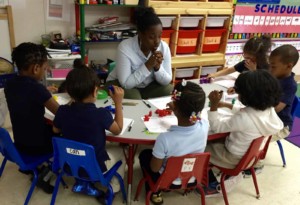Using Technology to Build Partnerships with Parents

By: Tasia Fields
Building a positive classroom environment isn’t just about what happens inside a classroom, it’s about building a classroom community without walls, one that includes and engages parents and caregivers. Research has shown that students with involved parents and caregivers, regardless of background, are more likely to be successful in academics and develop better social skills.
I spent seven years as an elementary school teacher at a Title I school located outside of Chicago, where nearly 80 percent of students come from low-income families juggling multiple jobs with family responsibilities. There were certainly times when creating and sustaining connections with parents and families felt insurmountable. As the K-12 Instructional Technology Coordinator for our district, I now talk with many teachers about the obstacles they encounter as they strive to create and sustain connections with families. Whether it’s due to parents holding multiple jobs or language barriers, educators across our district at times struggle to maintain the types of connections with families that are ideal for student outcomes.
Today, two-parent households, where both parents work full-time, constitute a growing new normal, making up nearly half the population, compared to 31 percent in 1970. And, in my district, a significant number of our students’ families speak a language other than English at home; a language that, in many cases, our educators are unable to speak.
Every day, my goal is to find ways to connect and engage with students’ families, despite these hurdles. We all know that regular communication with parents and families is the key to building a strong classroom community. By participating in ongoing conversations with all parents from day one, we’re able to build a partnership with each individual parent around their students’ success and growth.
With the rise of mobile, nearly all our district’s parents have a smartphone, making it easier for educators to establish those partnerships, and create a more seamless experience between home and school. In my own classroom, technology has allowed me to re-imagine how I communicate with parents. Through classroom communication app ClassDojo, teachers in my district are including parents in the little–but meaningful–classroom moments, while also overcoming persistent barriers like work schedules or language differences.
Like I did as a teacher, my colleagues are using ClassDojo to strengthen the connection between home and school, and overcome barriers often faced in low-income communities like ours. With the app, parents are brought right into the classroom experience, receiving messages translated into their native language and photos of their children’s work from class that day. And for my families without smartphones, we can print photos, translated messages, and student work to send home in students’ backpacks.
Of course, technology cannot build connections alone. Critical to developing the ties necessary for positive school community is flexibility and intentionality. As educators, many of us working parents ourselves, our jobs are to appreciate the overlap of the “school day” and the “work day” for many and to strive to find times that accommodate the increasingly busy lives of working families. Any time a parent lets me know he or she has a work schedule that prevents her or him from making it to parent-teacher conferences or open houses, we make sure to be flexible and accommodating.
You don’t have a remind an educator that the classroom community doesn’t stop at the walls of our classroom. As I think about the complex challenges we often face when it comes to engaging families of all kinds of backgrounds, I am excited and optimistic. We have many exciting advancements at our fingertips that enable us to improve communication, overcome differences, and ultimately build the positive classrooms we all envision for our children.
For more, see:
- 5 Keys to Forging Strong Parent Engagement
- Engaging Parents to Engage Learners: Digital Portfolios Can Make it Happen
- 5 Ways to Enrich Your Classroom Through Parent Engagement
Tasia Fields, a former classroom teacher, is the K-12 Instructional Technology Coordinator for Waukegan CUSD in Illinois. She is also the founder and author of Great Minds Teach Alike. Find Tasia on Twitter at @greatmindsteach.
Stay in-the-know with all things EdTech and innovations in learning by signing up to receive the weekly Smart Update.







Michelle Alexander
Great advice on engaging parents in the learning process. I'm excited to research the idea of using ClassDojo in my classroom.
Replies
Erik Day
Glad you liked this article, Michelle!